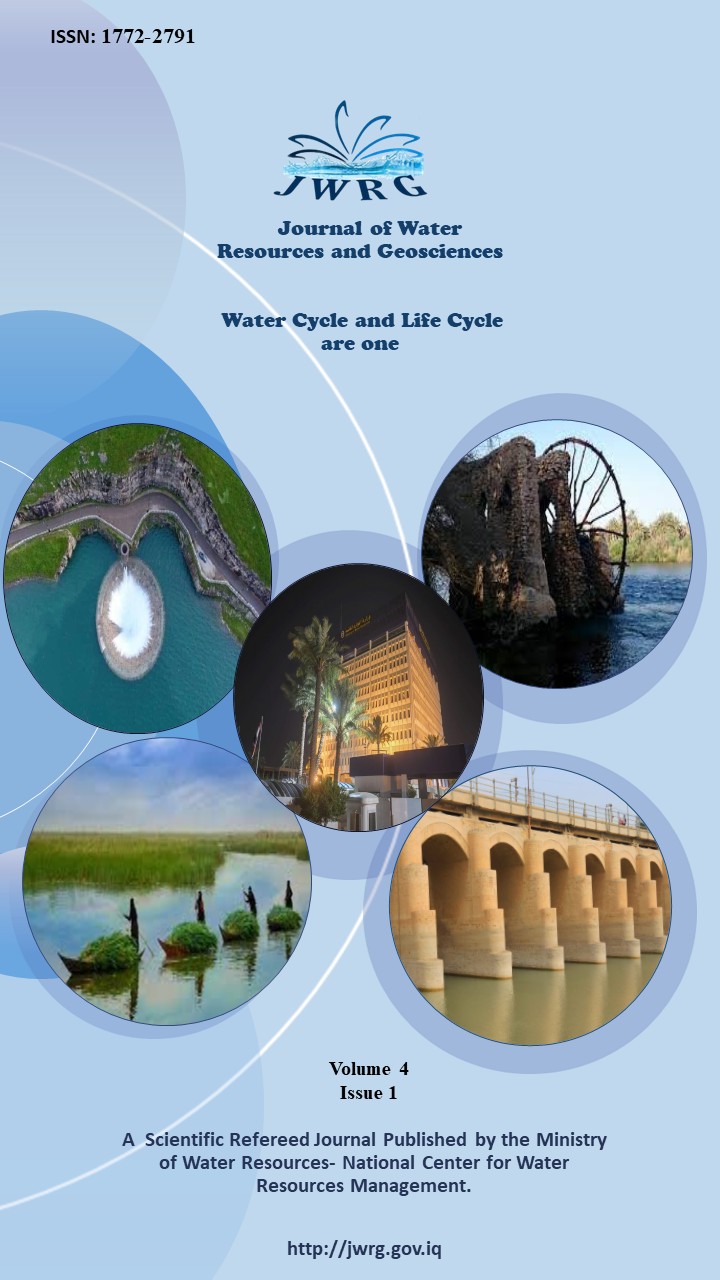Evaluation of Operation Al-Nasr Lake Basin in Dhi Qar Governorate Using Remote Sensing Technology
Abstract
Al-Nasr Lake or Depression is considered a part MainOutfallDrain (MOD) system and A large Al Graraf Drain. It is a lower land surrounded by a dirt dyke. The purpose of its construction is as a balancing basin where the water stored in it can be used for fish farming and stabilizing sand dunes, in addition to reducing pressure on part MOD pumping station in event of an increase in imports in the drain system in Dhi Qar Governorate. Total area is 84 thousand donums, 65 thousand dunums within province of Dhi Qar area and other within province of Diwaniyah and due to the importance of this depression and a lack of studies for it, So, the current study was prepared to shed light on the part located within the governorate of Dhi Qar and study of the hydraulics of its operation and highest percentage monthly evaporation values in the previous period, in addition to derivate equations for relation between the immersion area, storage volume and level during operation its by using remote sensing models. The current study proved that maximum submersion area reached to depression during the past twenty years is 22,908 dunums, that was in 2019 (wet year), which is equivalent to 35% from its total area. Remote sensing models also gave relationships between the immersion area of the with level and the immersion area with volume of the storage of the depression with high correlation coefficients equal to R2 = 0.988 and R2= 0.992 respectively
References
Ahmed, I. A., Baig, M. R. I., Talukdar, S., Asgher, M. S., Usmani, T. M., Ahmed, S., & Rahman, A. (2021). Lake water volume calculation using time series LANDSAT satellite data: a geospatial analysis of Deepor Beel Lake, Guwahati. Frontiers in Engineering and Built Environment, 1(1), 107-130.
Chen, J., & Wu, C. (2020, December). Evaluation of ecological sensitivity in Erhai Lake Basin, southwest China. In IOP Conference Series: Earth and Environmental Science (Vol. 612, No. 1, p. 012072). IOP Publishing.
Feyisa, G. L., Meilby, H., Fensholt, R., & Proud, S. R. (2014). Automated Water Extraction Index: A new technique for surface water mapping using Landsat imagery. Remote sensing of environment, 140, 23-35.
Salama, A., ElGabry, M., El-Qady, G., & Moussa, H. H. (2022). Evaluation of Grand Ethiopian Renaissance Dam Lake Using Remote Sensing Data and GIS. Water, 14(19), 3033.
Wang, X., Zhang, F., Chan, N. W., & Li, X. (2022). Monitoring Lakes Water Using Multisource Remote Sensing and Novel Modeling Techniques. Water, 14(23), 3904.
وزارة الموارد المائية,المركز الوطني لادارة الموارد المائية 2022.
وزارة الموارد المائية , الهيئة العامة لصيانة وتشغيل حوض الفرات , دائرة المصب العام 2023


